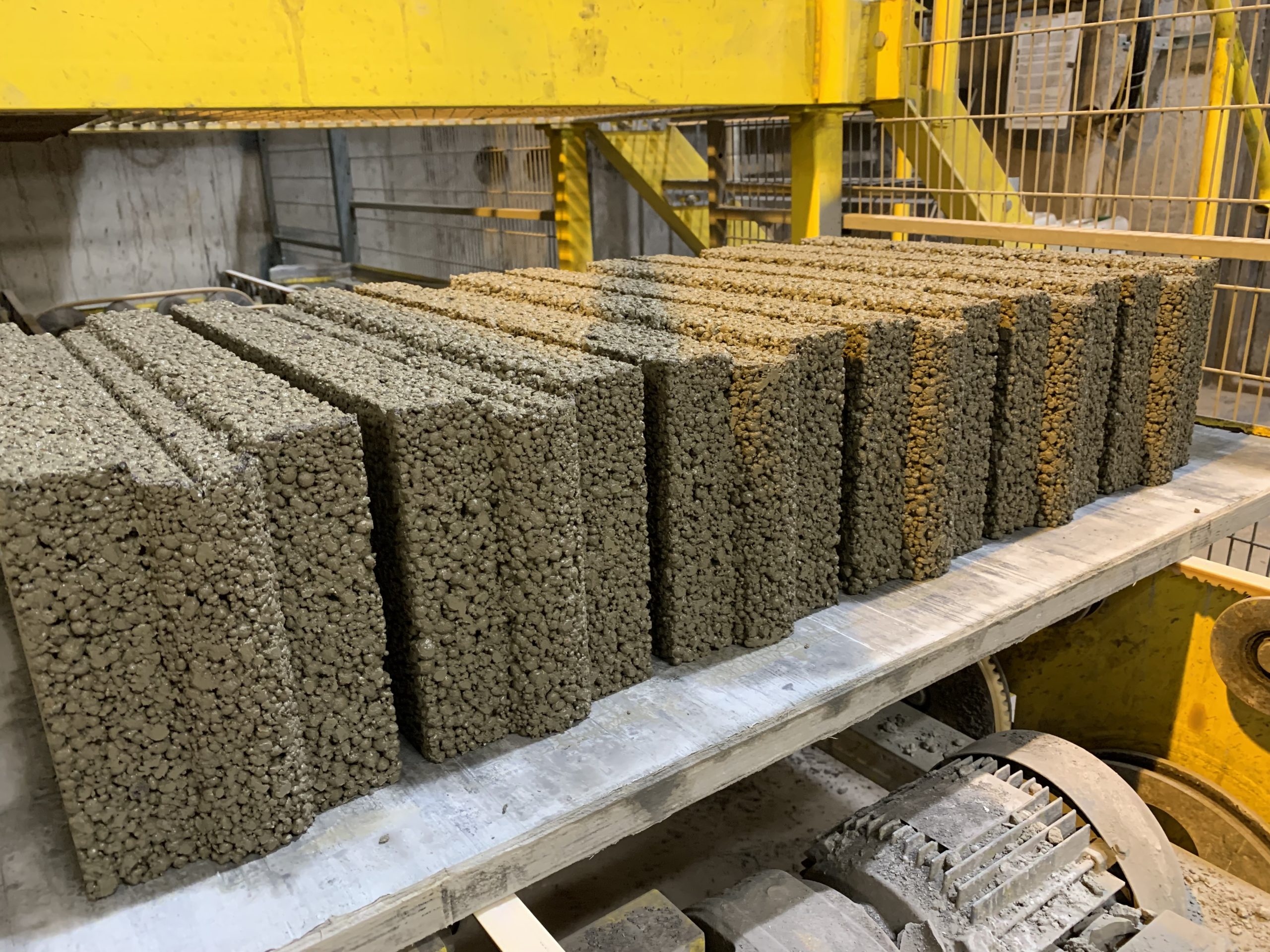Home » Technology » Quality improvement
Stronger
Quality improvement
Making concrete structure harder with Carbonaide
Carbonation strengthens concrete by densifying its structure. At least three individual mechanisms affect the microstructure densification. Firstly, carbon dioxide replaces hydroxides with carbonates. As carbonates are larger in molar volume than hydrates, the structure becomes more dense. The reaction also liberates water for further hydration and evaporation. As a consequence, the strength of the concrete increases immediately within the curing process.
The second reaction mechanism takes place days and weeks after the initial CO₂ curing period. Due to calcium carbonates, free silica is then formed in the concrete. The free silica reacts with the remaining cement hydration products via pozzolanic reaction. As a consequence, products that are cured with Carbonaide gain more strength between the 7d to 28d period than traditionally cured concrete.

Less Leaching, More Stability
The dissolved carbon dioxide also enables creation of carbonate minerals that would not form in normal curing conditions. Alumina phases can react with CO₂, forming various carbonaluminates. Also silicates can form various carbonate minerals. These minerals are potential reaction products for carbon curing based on the elemental composition of cement and SCM’s.
Early-age carbonisation also improves stability of the concrete by forming reaction products that are closer to thermodynamical equilibrium compared to traditional curing. For instance, concrete’s tendency to form calcium-based efflorescence reduces significantly. The calcium based effloresence, so-called hard effloresence, reduces when the CO₂ curing generates calcium carbonate already during early-age hardening.
Finally, the carbonisation process can also reduce the leaching of concrete. As the CO₂ curing generates carbonates instead of hydrates and hydoxides, the concrete’s solubility decreases. As an example, portlandite content is transformed into calcium carbonate that reduces the concrete’s fresh water leaching tendency.